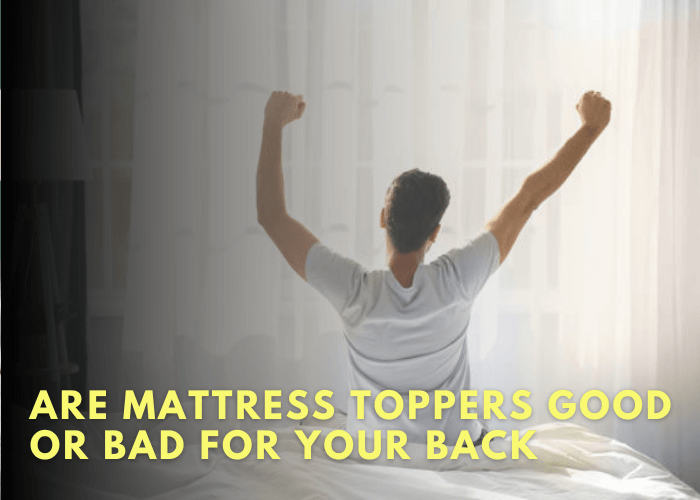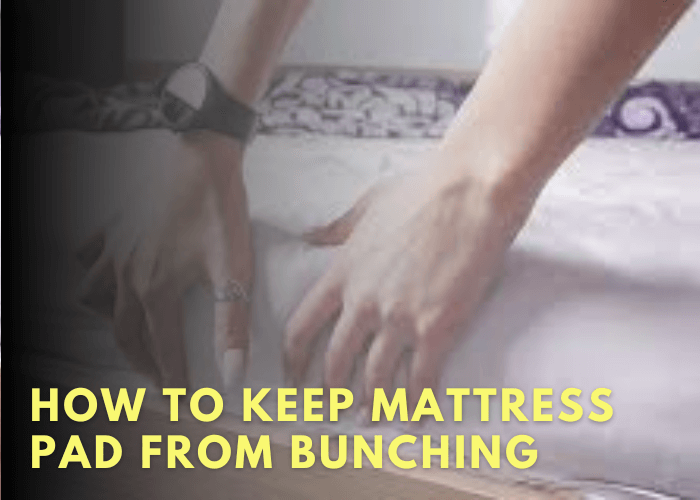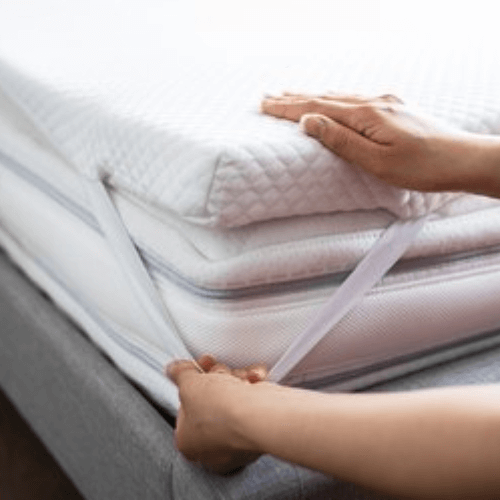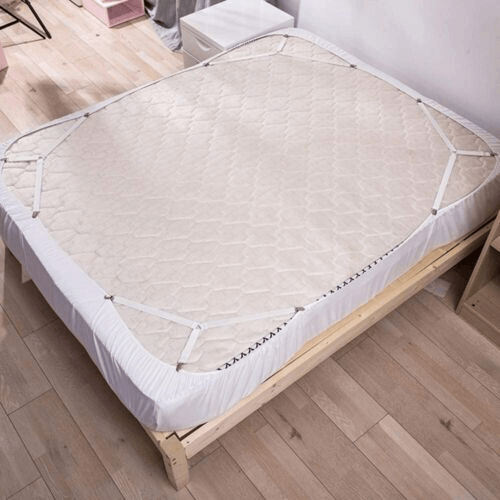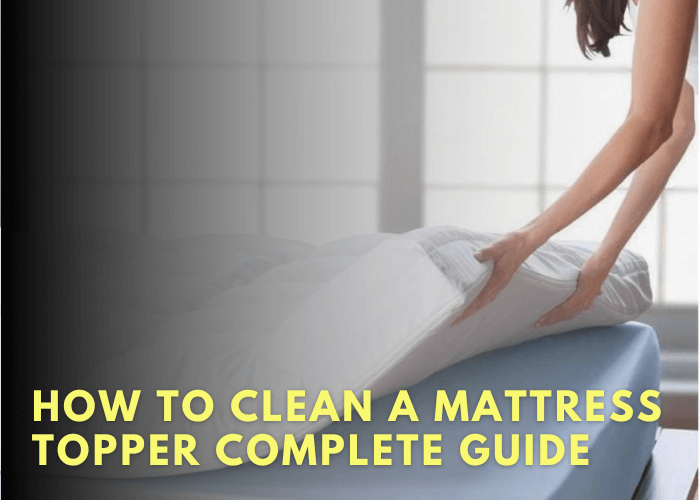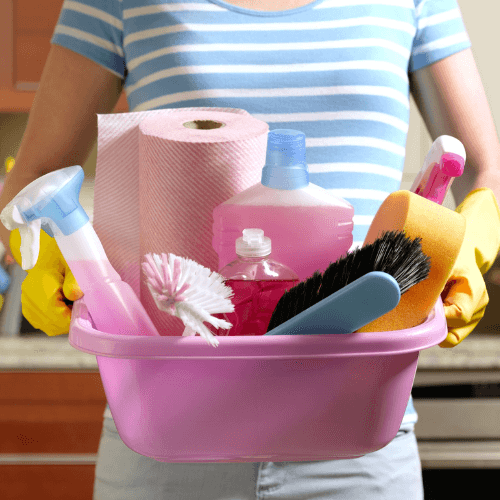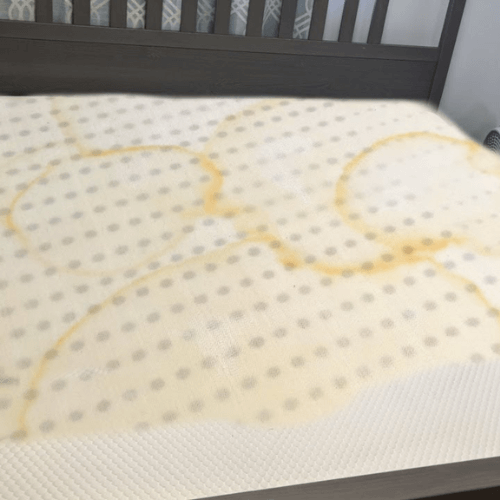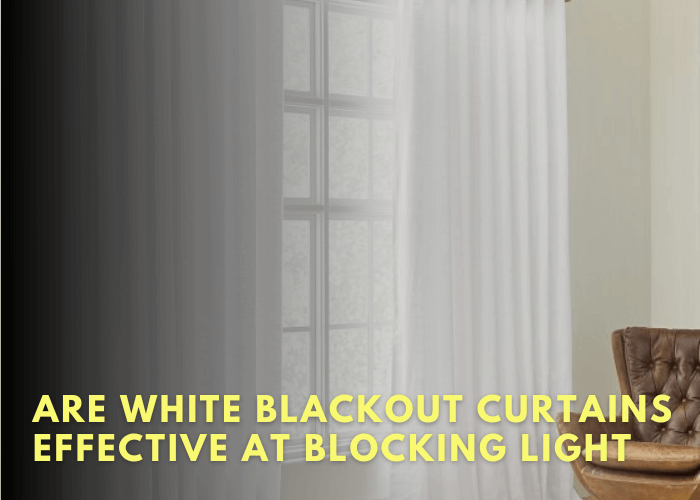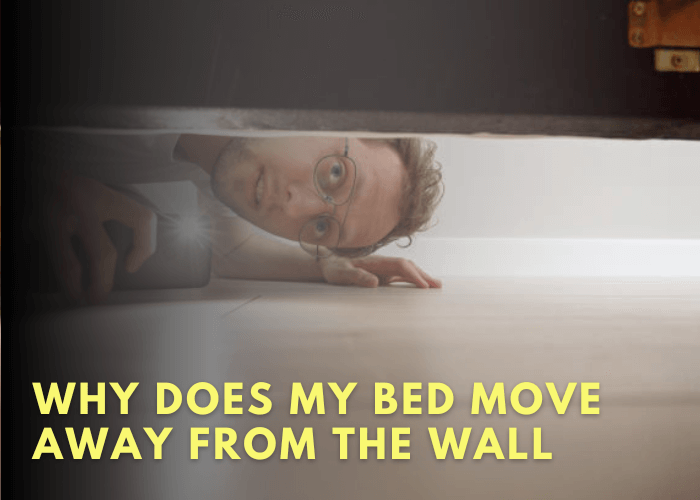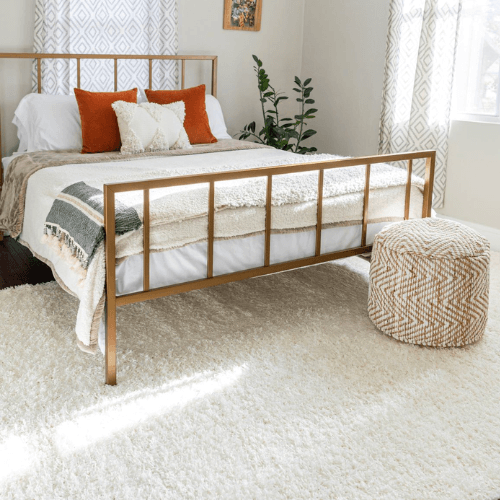Does a mattress topper make his back feel better or worse?
That’s what this article will explore:
- Are mattress toppers good or bad for your back?
- Different types of toppers.
- Alternatives to improve sleep quality.
Could mattress toppers really be the answer he was looking for?
Benefits Of A Mattress Topper For Back Pain

To start off, mattress toppers offer targeted support that relieves pressure points and improves spinal alignment.
This helps prevent or relieve back pain and aches as it reduces tossing and turning at night.
Furthermore, these toppers are available in different materials like memory foam and latex which provide varying levels of firmness and contour to meet individual needs.
From softer mattresses that alleviate joint pain to firmer ones that reduce motion transfer, mattress toppers can help you get the sleep you need for better health and wellbeing.
What’s more, they are also easy on the wallet when compared with buying a new mattress altogether.
With all these advantages in mind, it is clear why people find them attractive – they give you the best of both worlds: comfort without sacrificing quality support.
And while we’ve discussed how they benefit one’s back health, let’s take a look at some potential drawbacks next.
Types Of Mattress Toppers

Mattress toppers can be a great way to bring support and comfort to an existing mattress. But with so many types available, it can be difficult knowing which one is right for you.
Let’s explore the different types of mattress toppers and what they have to offer.
Memory foam is a popular choice among those looking for relief from back pain. It contours to the body, providing support where needed while also cushioning pressure points.
Latex is another popular option because it’s naturally cooling, breathable and responsive. It gives a firmer feel than memory foam while still offering some cushioning.
Polyester fiberfill provides cushioning without conforming too closely to the body, which can make it easier for those who move around in their sleep.
Wool is also an option that offers a gentle cushioning effect, though it tends to be more expensive than other materials.
No matter which type you choose, look for something that offers good support and comfort for your needs.
That way you’ll get the most out of your mattress topper and ensure you’re getting quality rest each night.
What To Look For When Purchasing A Mattress Topper
When it comes to mattress toppers, one size doesn’t fit all. It’s important to consider a few factors before making a purchase. Here are the things you should look for when buying a mattress topper.
First, decide on the type of padding you prefer. If you want extra comfort, go for down-filled or memory foam options; if you’re looking for support, choose latex or egg crate styles.
Then, think about the thickness of the material – thinner ones tend to last longer but thicker ones provide more cushioning and support.
Finally, determine your budget and make sure your chosen topper fits it.
You’ll also want to check the density and firmness ratings of any mattress topper you buy so that it suits your sleeping needs and preferences.
This is especially true if you have back problems; look for models with higher densities and firmer ratings that provide better support.
Before committing to a purchase, read customer reviews – they can give you an idea of how well the product performs in real life scenarios and help inform your decision-making process.
Does A Mattress Topper Impact Sleep Quality?

As the adage goes, “better sleep means better health”. So, does a mattress topper impact sleep quality? The answer is yes.
A mattress topper can improve the quality of your sleep by providing extra cushioning and support for your back and body.
Mattress toppers come in various shapes and sizes, from memory foam to gel-infused foam.
They provide an extra layer of comfort that can help reduce pain or discomfort while sleeping on a firm mattress.
Additionally, they can reduce pressure points and make it easier to move around during the night without feeling stiff or sore in the morning.
The added cushioning and support provided by a mattress topper can also help you get more restful sleep.
It may even help you fall asleep faster as well as stay asleep longer due to its contoured shape that conforms to your body’s curves.
Ultimately, using a mattress topper can be beneficial for overall sleep quality since it helps promote healthy posture while you snooze.
The right mattress topper will offer both comfort and support for your body while sleeping – something that’s essential if you want good quality sleep.
What To Do If A Mattress Topper Does Not Improve Back Pain
Back pain is a common problem for many people. A mattress topper may be a way to help relieve this issue. But what if it doesn’t?
The first step is to evaluate the mattress itself and see if it’s providing enough support. If not, then replacing the mattress may be necessary.
Also consider the firmness of the bed, as too soft or too hard may cause tension in the back muscles.
Look into other methods that can provide relief such as massage therapy, stretching exercises, physiotherapy or acupuncture.
Don’t discount lifestyle changes either; reducing stress and incorporating regular physical activity can improve your overall health and reduce discomfort.
These are all important steps that should be taken if a mattress topper does not improve back pain.
Alternatives To A Mattress Topper For Back Pain
If a mattress topper doesn’t help your back pain, there are alternatives. Here’s what you can try:
- Start with exercises. Simple stretches and core strengthening can be done at home and are often the best way to manage back pain. This includes basic yoga poses, planks, and other bodyweight exercises.
- Try a different sleep position. If you normally sleep on your back, try sleeping on your side or stomach instead. This may help align your spine better and reduce discomfort.
- Look into ergonomic mattresses, pillows, and bedding. Ergonomically designed products support your body in specific ways that help reduce strain on your spine while you sleep.
These are all helpful ways to improve back pain without resorting to a mattress topper. But if none of these work for you, then it might be time to see a doctor who can recommend treatment options more tailored to your individual needs.
From there, you can figure out what works best for relieving your back pain and getting a good night’s rest.
Frequently Asked Questions
How Thick Should A Mattress Topper Be To Help With Back Pain?
Back pain is a common issue for many people. A mattress topper can be a great way to alleviate some of the symptoms associated with back pain. But it’s important to know how thick the mattress topper should be for maximum benefit.
The thickness of your mattress topper will depend on personal preference and existing level of comfort. For example, if you already have a relatively comfortable mattress, then a thinner mattress topper may be more suitable.
If you’re dealing with more severe back pain, then a thicker mattress topper may be better-suited for giving your body some extra support while sleeping. In general, between 2 and 4 inches is considered ideal for helping with back pain.
Whether you go with a thicker or thinner option, make sure that the materials used in the topper are breathable and able to contour your body shape effectively when lying down.
Consider getting advice from an expert before making any purchasing decisions so that you can get the most out of your investment in terms of comfort and support while sleeping.
Conclusion
The verdict is in: mattress toppers can be great for back pain. Depending on the type, thickness, firmness, and material of the mattress topper, it can drastically improve your sleep quality and reduce back pain.
It’s truly a miracle that something so simple can have such an immense effect on our bodies.
But there are still a few things to consider before purchasing a mattress topper.
Make sure you know exactly how long it will last and that you’re getting the right thickness and firmness level for your needs.
Don’t skimp on quality either; high-end materials are worth every penny when it comes to your health.
In short, mattress toppers are like a godsend for those with back pain!
They provide unparalleled comfort and support while helping us get the restful sleep we need.
It’s an investment that pays off in spades – literally life-changing if you suffer from chronic back pain!

